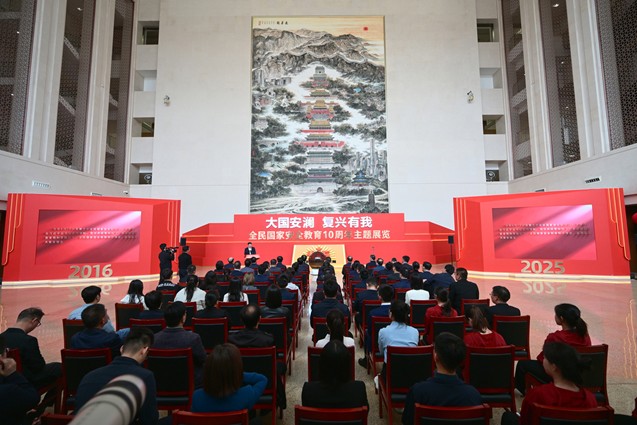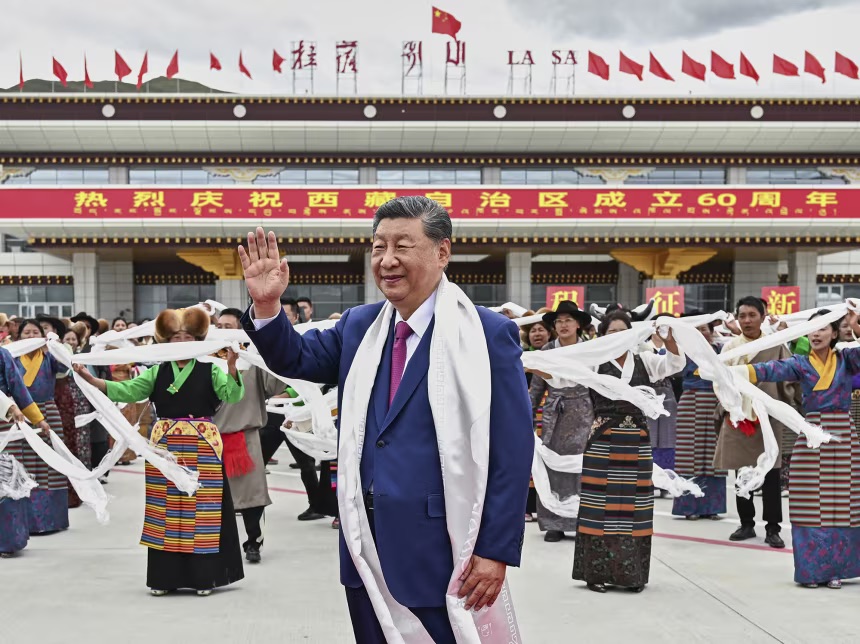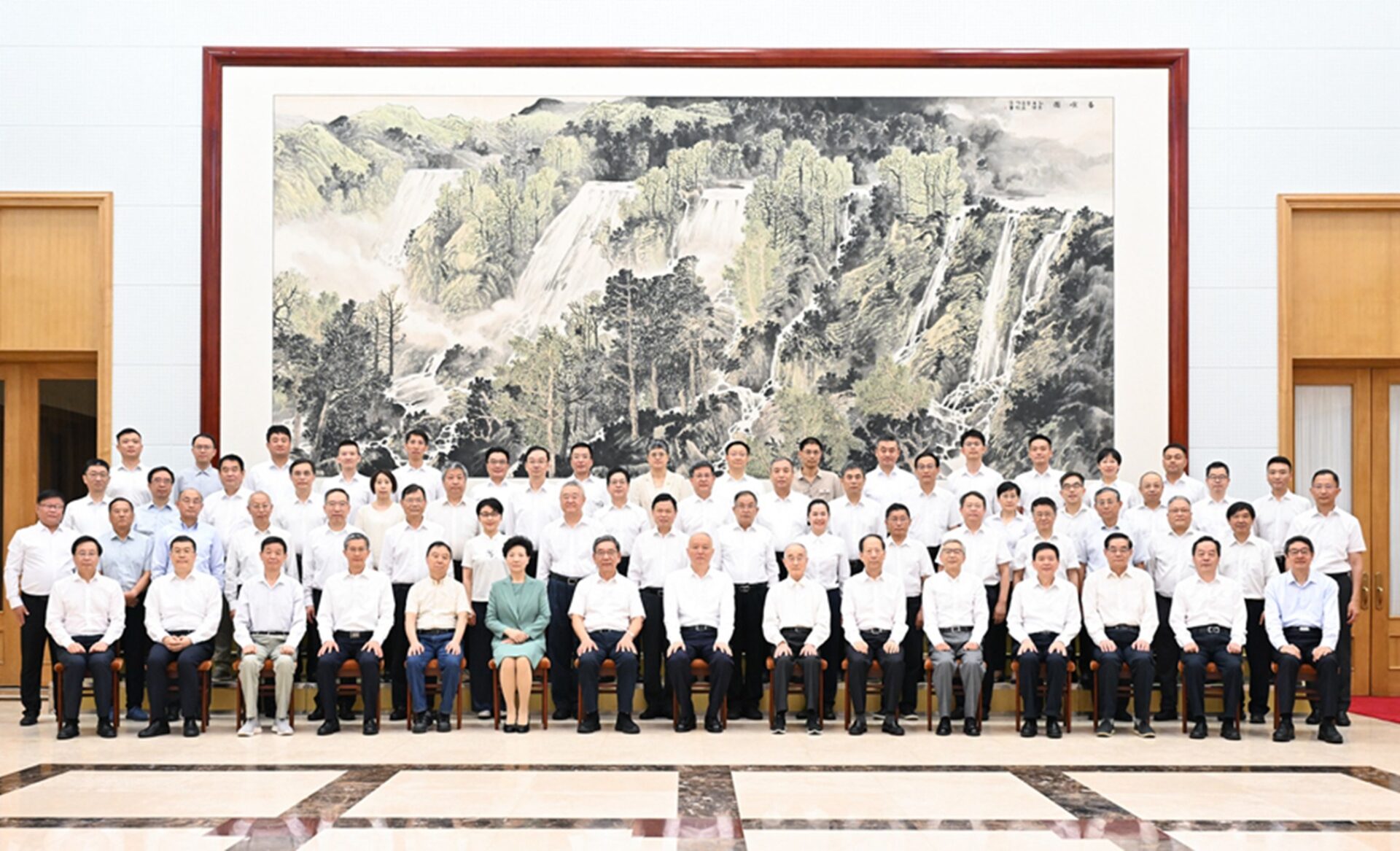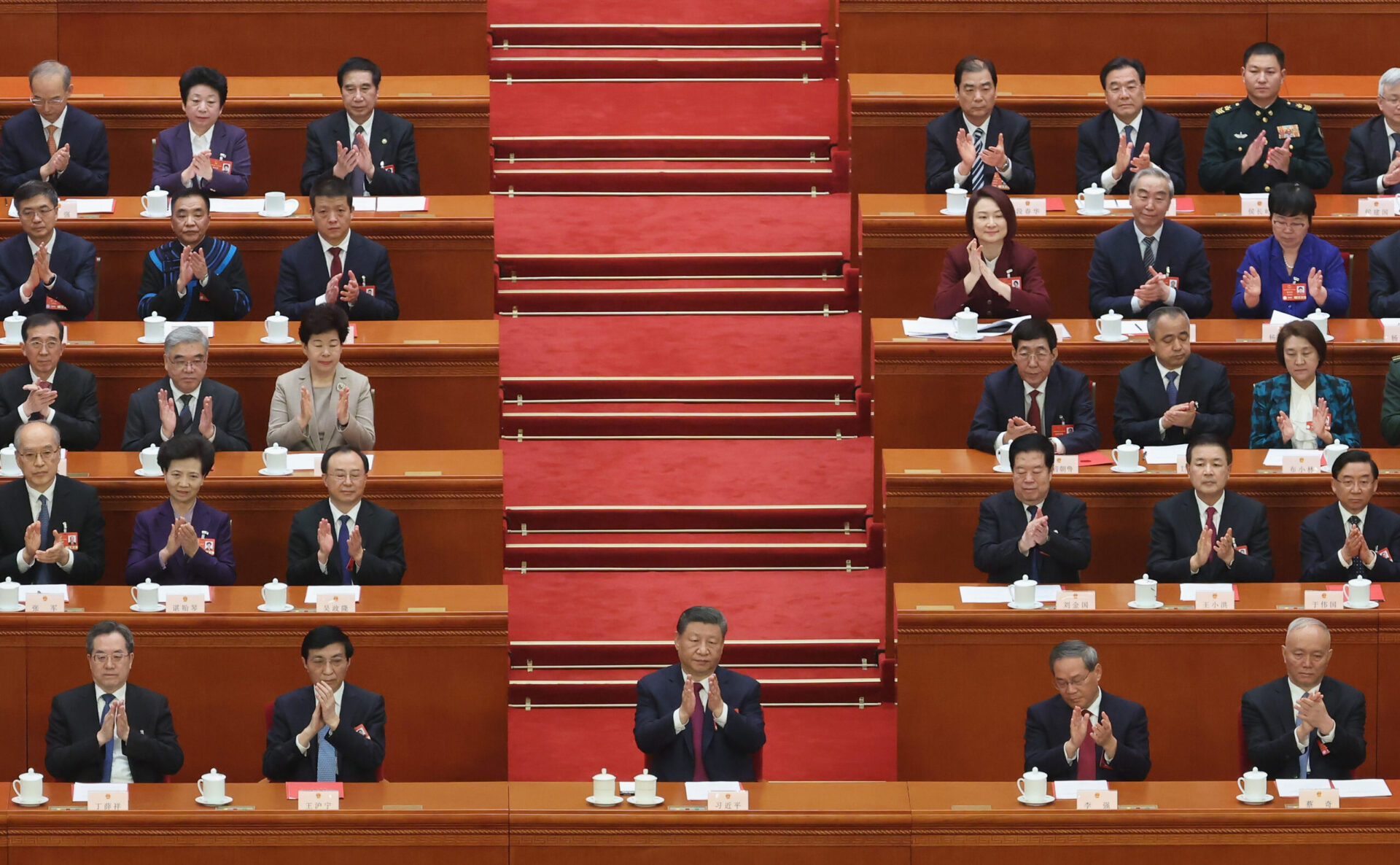
White Paper Offers Chinese Wisdom at the Crossroads of History
White Paper Offers Chinese Wisdom at the Crossroads of History
Executive Summary:
- A new white paper titled “China’s National Security in the New Era” is targeted to both domestic and international audiences and offers “Chinese wisdom” and solutions to contemporary challenges.
- In a bid for global leadership, the document frames “unstoppable” world historical trends as aligning with its mission of national rejuvenation and rebukes the United States for being a destabilizing international actor.
- Claiming the world is at a “historical crossroads,” the document is a call for countries to fall in line behind its vision of ensuring peace, development, stability, and order in the international system.
For the Chinese Communist Party (CCP), the world is in constant, complex motion; in flux. There are “trends” (动态) and “flows” (流动). History has “tides” (历史潮流) and thought has “currents” (思潮). A scientific analysis of the world tells us that any movement in time and space has two qualities: magnitude and direction. Time moves relentlessly in one direction. Nothing else does. In some cases, the direction of travel is upward (升); in others, it is in reverse (逆). There is, however, an overall direction (大方向). The Party, in a white paper on “China’s National Security in the New Era” (新时代的中国国家安全), now tells us with confidence that that direction aligns with its vision: “The historic tide … is unstoppable; the overall direction of human development and progress, and the overall logic of world history, have not changed” (历史潮流不可阻挡,人类发展进步的大方向、世界历史曲折前进的大逻辑没有变) (State Council Information Office, May 12).
Ingrained in the Party’s ideological frame is a fear of the human vulnerabilities that exposure to unwelcome movement—turmoil (变乱) and turbulence (动荡)—brings. Its response to this fear is an overwhelming preoccupation with immovability—or, in other words, stability (稳) and order (序). (‘稳’ appears more than 70 times in the text, which runs to over 20,000 characters, and ‘序’ nearly 20.) Stability is achieved through shaping one’s environment. [1] Stability over the long term relies on controlling one’s environment to the greatest extent possible. For a nation-state operating in an interconnected world where conflict threatens the social fabric (变乱交织的世界) and in which “the spatial and temporal domains are wider than at any time in history, and the internal and external factors are more complex than at any time in history” (时空领域比历史上任何时候都要宽广,内外因素比历史上任何时候都要复杂), stability is achieved by ensuring national security. “Among the great matters of state,” the preface of the White Paper begins, “security is essential” (国之大者,安全为要). “National security,” the preface later explains, “is an important basis for the stability and longevity of Chinese modernization” (国家安全是中国式现代化行稳致远的重要基础).
White Paper Promotes Party Concepts on Security for the World
The preface provides a succinct articulation of national security. The definition is worth quoting in full:
“China’s national security in the new era is the general security of holistic, systemic, and relative power. It is a security that takes the people’s security as its guide, political security as its root, and national interests as its criterion. It is a security that serves and promotes high-quality development, that adjusts according to trends in economic and social development, that supports stepping up high-level opening up, and that functions within the norms of the path of ruling by law. China plans as a whole for its own security and common security. It opposes the generalization of security, does not carry out security coercion, and does not acquiesce to threats or pressure. It maintains its independence and autonomy, and is confident and self-reliant. It resolves security issues on the basis of its own power, maintaining the path of national security with Chinese characteristics.” [2]
This definition lays out some of the main themes that the rest of the white paper explores in detail. In particular, these include the Party’s assessment of its own power and position within the international system, its approach to interacting with all other parts of the international system, the identity of security with development, and the reforms needed within the People’s Republic of China (PRC) to better ensure national security.
The preface concludes by presenting a rationale for releasing the white paper. It has done so, the authors write, to “explain the innovative conception and active implementation and construction of the work of China’s national security in the new era, to share its experience and methods, to promote world peace and development together with other countries, and to promote the construction of a community of common destiny for mankind” (为全面阐释新时代中国国家安全工作的创新理念、生动实践和建设成果,分享经验做法,与其他国家一道推动世界和平和发展,推动构建人类命运共同体).
The PRC government releases white papers for both a domestic and an international audience. According to the State Council Information Office’s website, it has published 173 since 1991—roughly five per annum. Although it only began publishing official English translations in 2010, the topics—which tend to focus on aspects of PRC governance that have been most concerning to foreign observers—reinforce the notion that the intended audience is global. The latest white paper is the first to be dedicated specifically to “national security” (国家安全), though national defense has been a regular focus since 1998 (China Brief, June 19, 2015, July 31, 2019). Another first is the release of a short English “abstract” to accompany the white paper, in lieu of a full English translation (Xinhua, May 13). While the absence of a full translation might not appear to square with the desire to court an international audience, it aligns with a general trend toward curtailing public government information. The Party may also believe that there are certain aspects of its approach to national security that the international community should focus on, while other elements are better not stated so explicitly. [3]
The Party Bids for Global Leadership
The Party sees the current moment as critical—both for itself and for the world. The white paper repeatedly describes the present as a “critical period” (关键时期) or a “key stage” (关键阶段) in the country’s development and on its path to achieving “national rejuvenation” (民族复兴) through Chinese modernization. This characterization is based on an assessment of the PRC’s place within the longue durée. History, another preoccupation of the Party’s, features prominently throughout the white paper. (历史 appears 21 times in the document.) In part, this is done is to intone the articles of faith in the Party’s narrative arc of historical inevitability: China was born 5,000 years ago; China has risen from the brink of death through the Party’s shouldering of the historic mission; China will come again, providing “new concepts and methods” (新理念、新办法) for bringing about a secure and peaceful world.
The Party’s assessment of the contemporary context is laid out in the first of its six main chapters, which is titled “China Injects Determinacy and Stability Into a World in Turmoil” (中国为变乱交织的世界注入确定性和稳定性). The first section of the chapter, one of thirty in the document, is titled “The World, Amid New and Turbulent Changes, Stands at a Crossroads in History” (世界在新的动荡变革中站在历史的十字路口). [4] At present, the Party believes that “changes in the world, the times, and history are unfolding in an unprecedented manner” (世界之变、时代之变、历史之变正以前所未有的方式展开) and that society is faced with “the critical choices of peace or war, prosperity or recession, and unity or confrontation” (和平还是战争、繁荣还是衰退、团结还是对抗的关键抉择). The previous century—often referred to as the American Century—was plagued by war, and “old thinking, such as spheres of influence, hegemonic stability, and the alliance system” (势力范围、霸权稳定、同盟体系等旧思维) dominated. Such thinking “cannot cope with new security challenges” (应对不了新安全挑战). The PRC, which does not have such “genes” (基因), offers an alternative path to the world, which it brings on an “unstoppable historic tide” (不可阻挡历史潮流) of peace, development, cooperation, and mutual profitability (“win-win”).
The Party argues that it has stellar credentials for taking on the mantle of global leadership. From its perspective, it is the great power with the best record on matters of peace and security (在和平和安全问题上,中国是世界上纪录最好的大国). It has “always stood on the right side of history” (始终站在历史正确的一边) (a line so good it appears twice in the paper) and has never initiated any war or conflict (从来没有主动挑起过任何一场战争和冲突). [5] Looking ahead, the Party asserts that its ability to maintain and shape its national security “has never been greater, and its determination is unwavering” (前所未有,决心矢志不渝). As a result, “it is certain to make new and greater contributions to … the promotion of world peace and development (必将为 … 促进世界和平发展作出新的更大贡献).
The Party frames Xi Jinping Thought, which integrates traditional Chinese culture with Marxism, as twenty-first century Marxist orthodoxy (The Asan Forum, May 7). The white paper indicates the importance of traditional culture by referencing ancient texts, including the Daodejing, the Lost Book of Zhou, the Book of Documents, and the Zuozhuan. The combination of these ideas with Marxism—which holds the “guiding position” (指导地位)—underpins the “holistic national security concept, which General Secretary Xi Jinping has creatively put forward” (习近平总书记创造性提出总体国家安全观). As the white paper explains, one part of this concept is promoting international common security, because national rejuvenation “requires a peaceful and stable international environment” (需要和平稳定的国际环境).
To engineer an environment in which it can thrive, the Party offers solutions packaged for the rest of the world as “Chinese Wisdom” (中国智慧). In a section titled “The Global Security Initiative Contributes Chinese Wisdom” (全球安全倡议贡献中国智慧), the white paper describes the initiative as a “new ‘Security Chapter’ of the community of common destiny and a ‘World Chapter’ in the concept of holistic security” (既是人类命运共同体的“安全篇”,也是总体国家安全观的“世界篇”). The scholar Daniel Tobin has argued that the community of common destiny concept—also known as the community of shared future—refers to a proposed alternative global order (The Asan Forum, May 7). As of 2024, it had the support of 119 countries and international organizations. The white paper goes on to describe the Global Security Initiative as “a Chinese solution that China offers for global security governance … rooted in China’s practice and implementation of an independent and autonomous peaceful diplomacy and originating from a Chinese culture and wisdom that fosters trustworthiness, friendship, harmony, and coexistence” (是中国对全球安全治理给出的中国答案 … 植根于中国独立自主的和平外交政策与实践,来源于讲信修睦、和合共生的中华文化与智慧).
Conclusion
According to “China’s National Security in the New Era,” since Xi Jinping came to power in 2012, the PRC’s comprehensive national power, international influence, and ability to resist risks have strengthened significantly (进入新时代,中国综合国力、国际影响力、抵御风险能力显著增强). The white paper concludes, however, by warning that the country still has work to do: “On the new journey,” it says, China’s national security “will still rely on the people to make history” (新征程上,仍然要依靠人民创造历史). In a symbolic rhetorical flourish, it calls for “building an unbreakable Great Wall of national security” (筑起国家安全坚不可摧新的长城) and finishes by saying that this will take “hard work and struggle” (努力奋斗)—thereby finishing on an appropriate, ideologically charged, note.
White papers may not be authoritative policy documents and may serve specific messaging purposes. They nevertheless provide a useful window into how the Party wishes to frame its ideas for the world and the broad contours of the policies it is taking to achieve its goals. This latest document indicates that it sees significant risks for itself and the international system, of which the United States is the primary source. More importantly, however, it evinces confidence that world historical trends favor the Party and its ambitions of achieving national rejuvenation. The rhetorical question it poses to all other countries is crystal clear: We have now come to a historical crossroads; which path will you choose?
Notes
[1] One framework for Chinese civilization writ large conceives of it as an “hydraulic society.” Originally associated with the Marxist historian Karl August Wittfogel and his theory of “oriental despotism,” its claims that the need for flood control and irrigation in certain societies gave rise to a centrally-coordinated and competent bureaucracy have largely been invalidated. (In China, for instance, the rise of the state predated the ability to exert control over water through large infrastructure projects.) The ability to marshal resources to control the flow of water throughout the state, however, were characteristic of many successful early Chinese polities. It is interesting to speculate that such a view of state capacity and state functions might inform the Party’s approach to exercising power today. If you are aware of any research on this topic, please get in touch with the editor: cbeditor@jamestown.org.
[2] 总体 can also be translated as “comprehensive”; however, official English translations tend to use “holistic.” The original text reads as follows: 新时代的中国国家安全是总体的、系统的、相对的大安全,是以人民安全为宗旨、以政治安全为根本、以国家利益为准则的安全,是服务和促进高质量发展的安全,是根据经济社会发展动态调整的安全,是支撑进一步扩大高水平开放的安全,是在法治轨道上规范运行的安全。中国统筹自身安全和共同安全,反对安全泛化,不实施安全胁迫,不接受威胁施压,坚持独立自主、自信自立,把解决安全难题放在自身力量的基点上,坚持中国特色国家安全道路。
[3] An analysis of the English “abstract” is beyond the scope of this article, so this claim ought to be taken as somewhat speculative.
[4] The document includes a preface, 27 sections across the six chapters, a conclusion, and an appendix listing 15 key laws from the new era that relate to national security.
[5] If this claim provokes skepticism in the reader, there is good reason for it. Such patently false assertions offer a window into the Party’s primary mode of messaging, which operates by rules that place a much higher value on utterances that are ideologically correct and coherent than on those that seek to present empirical facts.


